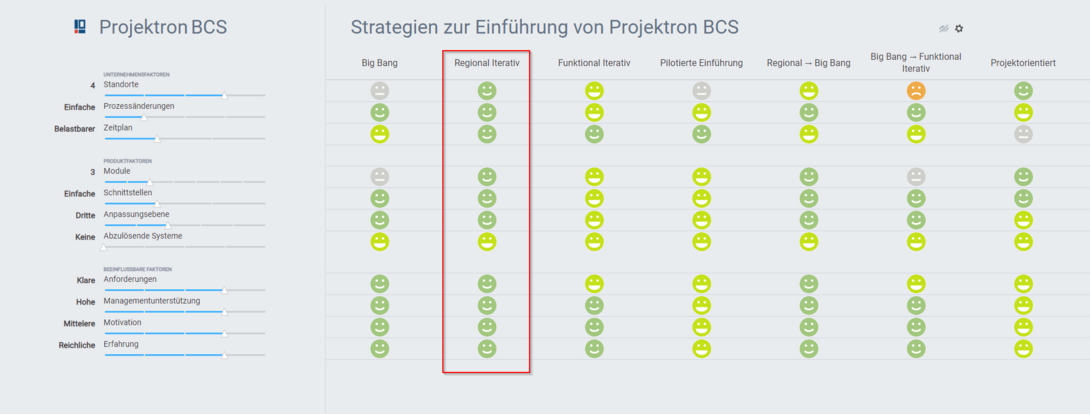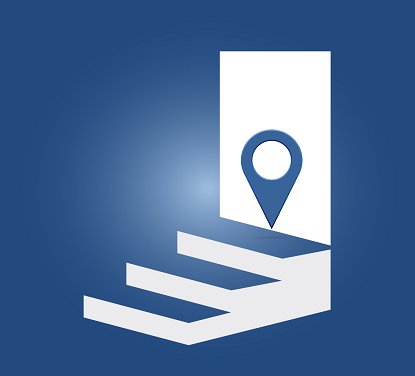03/06/2023 - Articles
Regional or departmental iterative software rollout
The regional iterative software implementation and the departmental iterative software implementation based on the same principle are variants of the iterative, step-by-step implementation of complex enterprise software. Find out here for which companies and which use cases these implementation strategies are suitable, where their advantages and disadvantages lie and how you can use the departmental or regional iterative method for your software implementation project in a targeted manner.
What is a regional or departmental iterative software rollout?
The regionally iterative and the departmental iterative approaches are strategies for software implementation. In the regionally iterative implementation strategy, a company introduces a software completely with all desired function modules successively at different locations. In the case of departmental iterative implementation, the software is introduced successively in different departments of a site. Similar to the big bang method, the introduction is preceded by an elaborate and time-consuming preparation phase in which all interfaces are already fully developed. For a single site, the introduction according to the regional iterative approach is similar to a Big Bang introduction.
After the software introduction at one site or in one department, the project managers collect and analyze all problems and adapt the software to the company-specific requirements. Only then does the rollout begin at the next site or department. Data exchange and data synchronization between different sites can suffer if one or more sites are already using the new system, but others are still using the legacy system.
If the corporate culture and work processes of the sites or departments are similar, a strength of this strategy is that the experience gained from the first implementation iteration can be carried over to the next iterations. Problems that arise, such as increased training needs or surprising requirements, can thus be solved before the introduction at the next site/department.
Departmental and regional iterative software introduction: advantages and disadvantages
Although the regionally or departmentally iterative software implementation is an iterative approach, it has many parallels with a software rollout using the big bang method. Accordingly, the approaches also share some advantages and disadvantages, although there are additional aspects on both sides in the regional or departmental iterative introduction models.
 |  | |
|
| |
|
| |
|
| |
|
|
When do regional iterative or departmental iterative software rollouts make sense?
Of course, a site-by-site iterative approach can only be used if the company has at least two sites. The similar model of departmental iterative software implementation is also suitable for companies with only one location, provided the new software is to be used across departments for different types of projects and support different processes.
This regionally iterative method is particularly suitable for internationally positioned companies where processes and corporate culture differ depending on the location. If different departments of a company location have very different organizational structures and workflows, the departmental iterative implementation strategy makes sense. For a single site, the regionally iterative implementation strategy is similar to the big bang method of software implementation.
When are regionally iterative or departmental iterative software rollouts not appropriate?
A regionally iterative software rollout does not make sense if a large number of different old software products are to be replaced by the new software. This would quickly increase the costs in the preparation phase and make this implementation strategy unprofitable. If there are three or more systems to be replaced, a big bang implementation or a combined big bang approach followed by a functionally iterative implementation would be the best options.
If project teams work together across departments or locations, regional iterative or departmental iterative implementation is also not recommended, since in this case one part of the team would have to work with the new system, while another part would have to work with the respective legacy system.
The same applies if projects are managed by a central PMO and evaluated across departments or locations. In this case, duplicate efforts may be required for synchronous maintenance of project data in the old and new systems. If necessary, even temporary interfaces to the old software would have to be created to enable seamless project controlling.
Other implementation strategies, e.g., a functionally iterative or project-oriented implementation, are also preferable for more than four sites, since the regionally iterative software implementation would not be able to sufficiently take into account all the specific requirements of each site or department.
Welche Alternativen zur regional/abteilungsweise iterativen Softwareeinführung gibt es?
Ihre Ausgangslage ist nicht ideal für die Anwendung der regional oder abteilungsweise iterativen Softwareeinführung? Ihnen stehen zahlreiche weitere Optionen offen:
Software implementation after Big Bang
With the big bang strategy, all software modules are activated for all users on a specific date. The new software replaces the legacy system holistically, so that users do not have to maintain processes in the new and legacy systems in parallel. However, the risk is high.
Project-oriented rollout
The project-oriented software rollout is a variant of the iterative, i.e. step-by-step software rollout. A small project team initially uses the new software as a tiger team in a typical company project. After appropriate adjustments, the rollout takes place company-wide.
Functional iterative implementation strategy
Functional iterative software implementation is a variant of the iterative, step-by-step introduction of modular enterprise software. In this approach, the individual functional modules of the new software are introduced into the company one after the other.
Combined implementation strategies
By combining big-bang and iterative process models, companies can develop customized strategies for introducing enterprise software that are precisely tailored to their individual needs. This enables more precise and flexible implementation.
If you are unsure whether a regional or departmental iterative introduction of enterprise software is the appropriate approach for your implementation project, you can count on our expertise. With decades of experience in the introduction of complex software solutions, we can support your project team individually and competently through strategy finding, training, workshops and consulting.
Conclusion: regional iterative or departmental iterative software introduction
The regional and departmental iterative implementation strategies enable successive introduction of software at different locations or departments. The strategies require an elaborate and time-consuming preparation phase in which all interfaces are developed ready. After the introduction, problems are analyzed and the software is adapted to the company-specific requirements before the next iteration begins.
The regionally iterative implementation strategy is best suited for internationally positioned companies, while the departmental iterative strategy makes sense when departments have very different organizational structures and workflows. Both strategies have their advantages and disadvantages and are not suitable if many different legacy systems need to be replaced, more than fourdifferent modules need to be introduced at the same time, or if project teams collaborate across departments or locations.

About the author
Francisco Josué Artaza has been working for Projektron GmbH for 15 years, currently as marketing manager and user consultant. He is certified according to IPMA, PRINCE2 as well as Scrum Product Owner. He is an expert in software implementation strategies and has developed a tool that facilitates the selection of the appropriate strategy.












